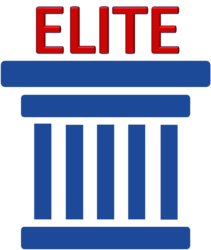In the wake of the recent Supreme Court ruling outlawing affirmative action in college admissions, other organizations need to realize that the same type of ruling could come their way. Therefore, they need to take steps now to incorporate quantitative means to document their promotion and selection choices.
Opponents of DEI programs believe, or want to believe, that underrepresented people are being promoted regardless of their competence, i.e., less competent individuals are being promoted to positions over more competent individuals. People who work with DEI programs know that this is not the truth. In most cases, a candidate is chosen for a position from a pool of qualified candidates. There is not one single criterion that indicates a person is more competent than another as candidates are chosen based on a number of factors. If the final selection comes down to choosing between 3 equally qualified candidates, other subjective factors may be considered, including race or gender identity. This is far from promoting someone less competent over someone more competent, but that’s the narrative they prefer to espouse.
Organizations have an even bigger incentive to have a diverse workforce than a university has in having a diverse student body. If a university doesn’t meet its student body diversity goals, they can still be a quality university, but if an organization doesn’t have a diverse workforce, it could impact their financial outcomes or the effectiveness of delivery their product or service. History is littered with examples of poor organization choices in marketing, advertising and customer management (remember the Kendall Jenner Pepsi commercial from 2017). Lack of input from a diverse team and/or a lack of understanding of the marketplace can be detrimental to an organization’s reputation and subsequently their operations.
Unfortunately, organizations may be forced to justify their DEI programs at some point in the near future. The best way to support your program today is by utilizing objective data that indicates that the candidate chosen is just as competent as the candidates not chosen. Here are 3 steps to take on this journey right now.
- Use a tool to provide a quantitative assessment of your organization’s leaders. This tool should assess the leader along multiple dimensions and include a self-assessment to determine how they view their leadership abilities, a team perception to analyze how their team (peers and direct reports) perceive them as a leader, and an organization analysis to determine how they compare to their peers at the same organization level in and outside of your organization. Research has indicated that each organization level has a distinct leadership profile.
- Create groupings or tiers of your leaders and potential leaders to document the similarities between candidates in the same grouping. When you’re working with multi-dimensional criteria, this step could be very challenging. The criteria needs to be summarized into two or three categories to be actionable.
- Select candidates from the groupings or tiers which ensures that the selected candidate is just as qualified as the unselected candidates. Candidates outside of the groupings can be considered, with additional documentation of the decision by the hiring manager. An added benefit of the grouping or tier method is that it can open the selection process to more and better-quality candidates since the choice is from a pool with similar qualifications. Well-qualified candidates who may have been overlooked due to misunderstandings, bias, or lack of the right relationships may now rise to the surface for consideration.
The time is now to begin quantitatively documenting your selection choices. It’s not a matter of whether they will come after DEI programs, it’s a matter of when.
Read more about how we help organizations manage their leadership resources at LeadershipRMS.com.
Additional Reading:



